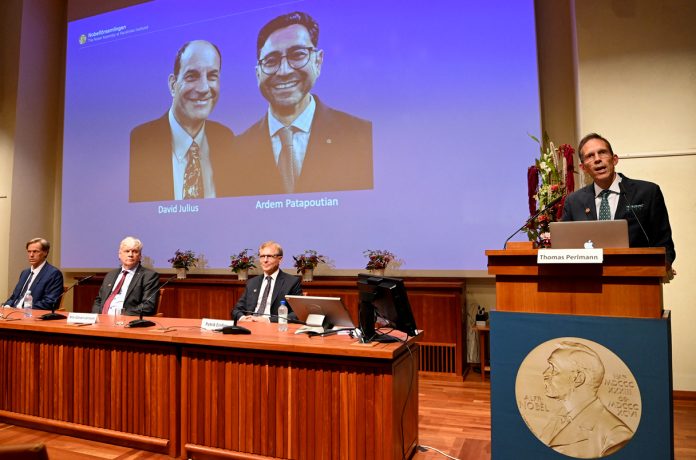Davin Shaner
Contributing Writer
Last week, the University of California, San Francisco (UCSF) professor David Julius was awarded the Nobel Prize in Medicine and Physiology alongside Ardem Patapoutian for their research on the biology of sensing temperature and pain. Julius has contributed to research in the UC system since 1977, but his recent discoveries in the little-known science of pain have launched the former Golden Bear into Nobel stardom.
Julius’ award makes him the 69th person to receive a Nobel Prize from the University of California, solidifying the UC system’s status as the nation’s largest and most innovative force in the research of health sciences.
“Julius’ award makes him the 69th person to receive a Nobel Prize from the University of California, solidifying the UC system’s status as the nation’s largest and most innovative force in the research of health sciences.”
The bulk of his findings that led to the honor came from his unique experimentation with chili peppers to identify touch receptors, showing how a little creative spice in the lab room can trigger explosive effects on the globe.
Originally from New York, Julius started his college career at MIT before attending graduate school at UC Berkeley, where he studied biochemistry. From there, he conducted research at several institutions before working at UCSF.
Julius began making breakthroughs upon arrival in 1997 when he and colleague Michael Caterina identified TRPV1, the ion channel responsible for detecting capsaicin (the compound that gives spicy foods their kick!). With the help of chili peppers, Julius’ team was able to unearth what happens at a scientific level when we experience the pain associated with hot temperatures.
The experiments, which involved a monotonous schedule of testing thousands of ion channels with capsaicin, proved brilliant as the research shed light on chronic pain, a subject much left up to theory. This trailblazing discovery in such a stagnant field evoked much attention as the idea of identifying pain with biology hinted at pharmaceutical applications, prompting much sponsored research in the ensuing years.
“The experiments, which involved a monotonous schedule of testing thousands of ion channels with capsaicin, proved brilliant as the research shed light on chronic pain, a subject much left up to theory.”
The hype proved worthy as Julius and fellow researcher Yifan Cheng in 2013 furthered the TRPV1 discovery by finding its atomic resolution, then in 2015 identifying an entirely new ion channel in TRPV1. These continued advancements in human physiology, paired with Patapoutians’s own experiments with TRP channels, checked the Nobel committee’s box for “making changes in science for the betterment of mankind.”
With Julius describing the field of somatic sensation as being “the least understood” of all human biology, his innovative findings prove immensely helpful for scientists conducting research in chronic pain to combat the current opioid epidemic. In UCSF’s article congratulating their Nobel Laureate, he states, “I think we need some new insights and new ideas for treating pain pharmacologically and in other ways and I think our work will contribute to that.”











